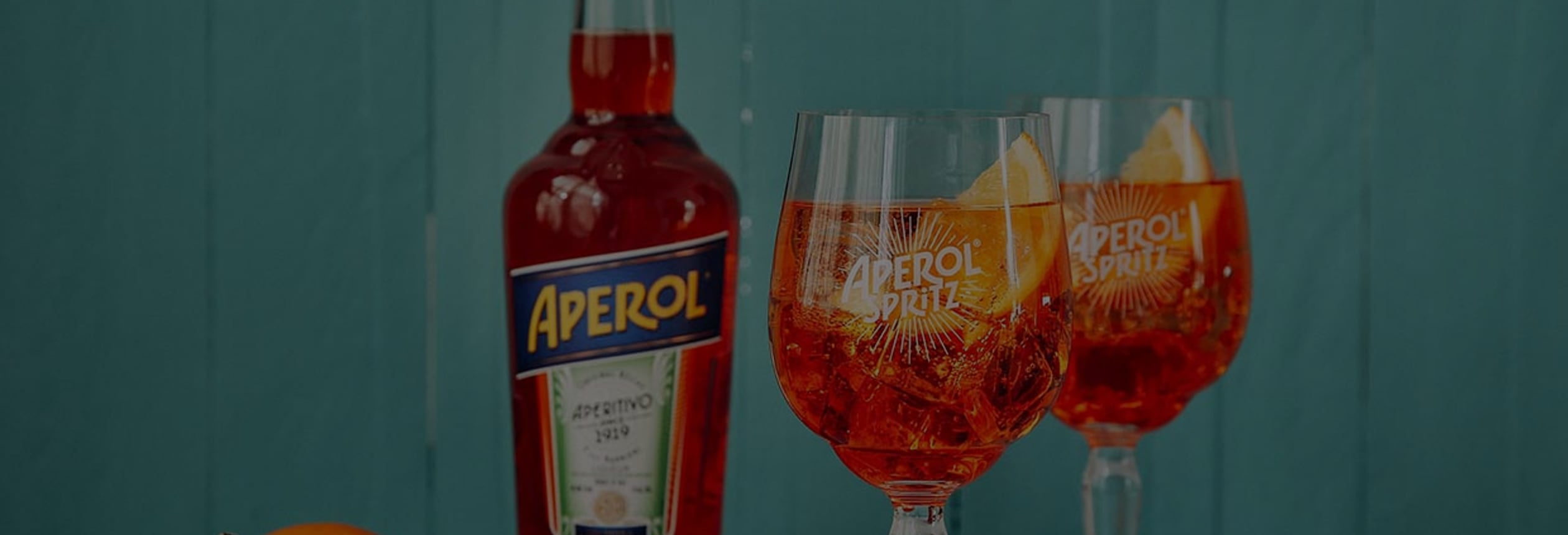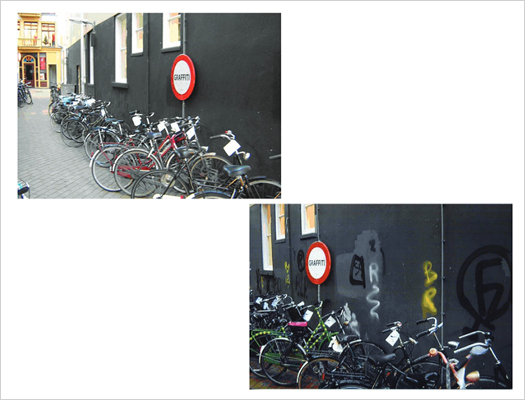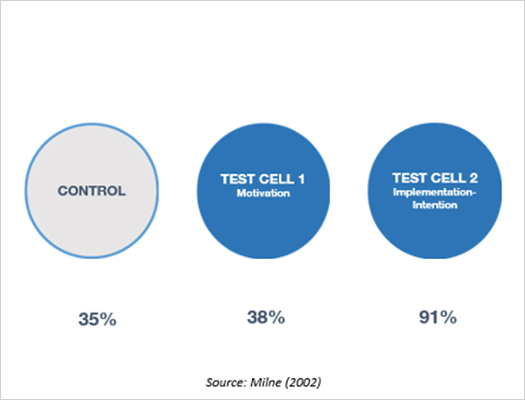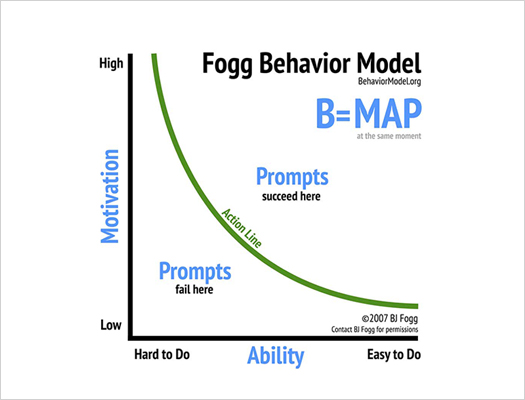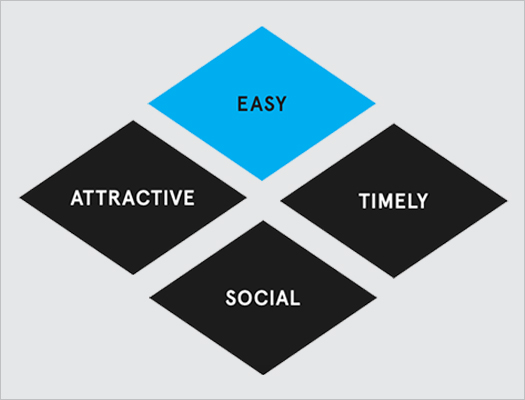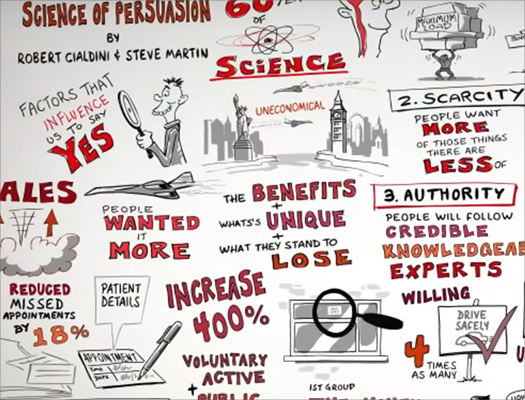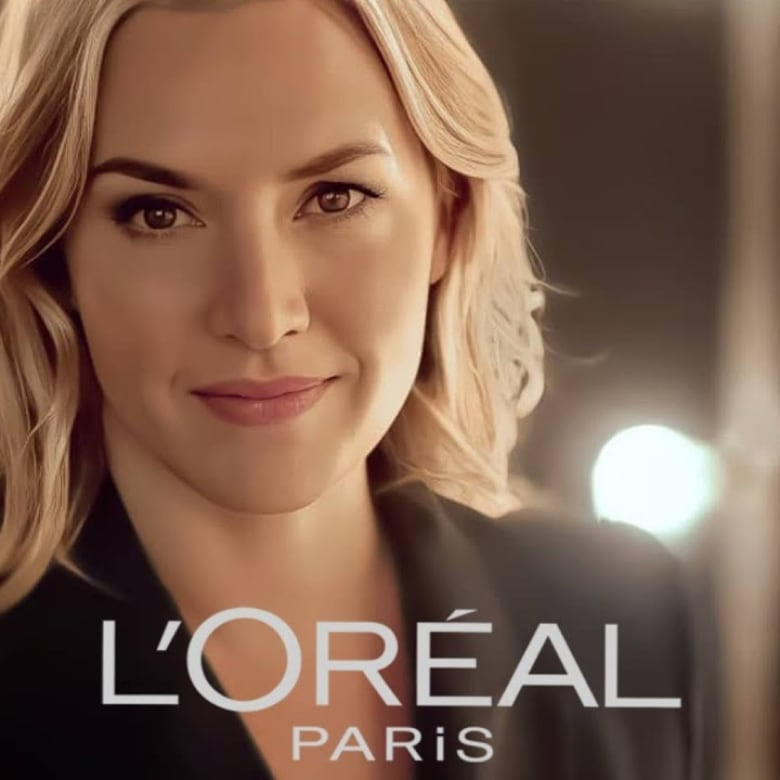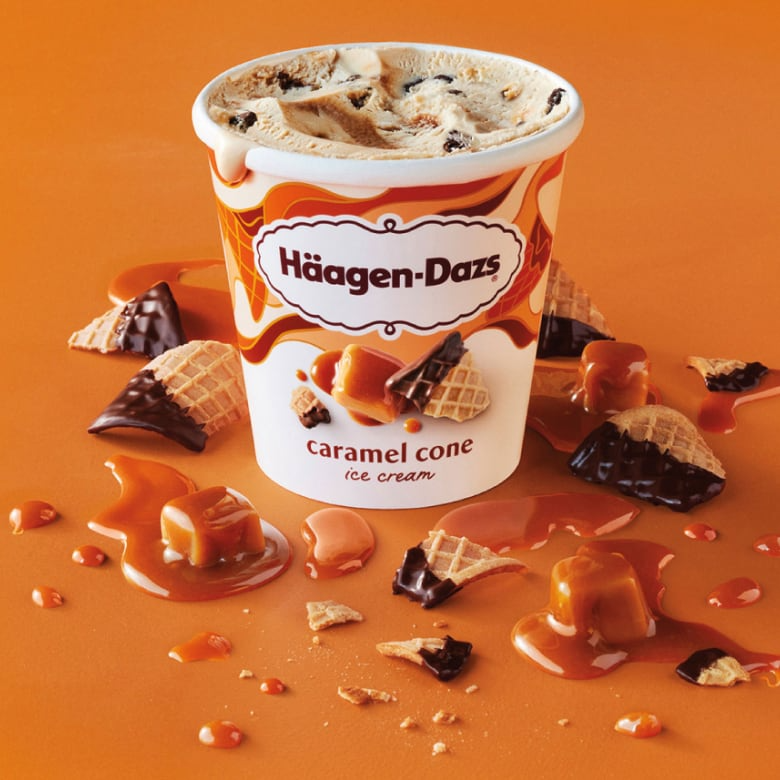00:00 / 13:18
Episode Transcript
- MichaelAaron: Welcome back to the Behavioral Science for Brands podcast. Today we're talking summertime, the color orange, and cocktails. So we're gonna dive deep today on Aperol, and really uncover some of the science that's powering the success of the brand. I'm MichaelAaron Flicker.
- Richard: And I'm Richard Shotton.
- MichaelAaron: Let's jump in.
- MichaelAaron: So, Richard, sometimes on these podcasts, we're looking at ad campaigns. And we're looking at inspiring creative, that really drove the brand and made consumers think differently about the brand. But in today's podcast, we're looking at marketing more generally.
- MichaelAaron: And Aperol. Specifically, what we're going to look at some of their ads, that's not really what we believe has been the key to their success. In fact, it's a product attribute that they've chosen to play up, that's really been critical. And it's the color the distinctive color of Aperol.
- MichaelAaron: And when you think about after all, you just see in your mind this brighter orange, very fun and iconic color. And in fact, when you look at their on premise and off premise assets, cocktail, umbrellas, actual patio, umbrellas, all of their merch all uses this color orange, and it helps create identity for the brand. But it's not just good color branding that's going on here. There's more to it than that.
- Richard: Yeah, absolutely. I think one of the crucial things to their success is they make the consumption of their product visible. Whereas for many drinks, the consumption is invisible. So if you're in a bar, you're in a pub, and you see someone and they're drinking a black drink, you don't know whether it's Jack Daniels or
- MichaelAaron: rum and Coke, whiskey and Coke
- Richard: Yeah, exactly. So. So the success of that brand is invisible. Think about Aperol, the balloon glass, the orange colors, all that merch mentioned, if someone is in the bar drinking, that it's distinctive, it's noticeable, and it is easily identifiable as Aperol, they have made their purchasing visible to competitors loud, it's been visible. Now that's really important, because it taps into one of the big ideas of behavioral science,
- Richard: this idea called social proof. And the idea of social proof is if you can emphasize your popularity, your brand will become more popular and more appealing. Now, most brands apply this idea in a very pedestrian direct way. They go out and say we've got 10 million customers, we're with a market leader. Now that's fine, that will boost success. But Aperol I think is a much more creative way. It never directly states popularity, but they imply their popularity by being so distinctive and visible. Now, I'm not speculating here.
- Richard: There is an amazing study from a job psychologist at the University of Groningen called Kees Keiser. And in his study finds this alleyway loads of bikes parked there, he puts flyers for a fictitious sports shop on the handlebars. And there's no bin nearby. So some people are going to be tempted to litter. And he monitors what proportion of people just take the flyer of the handlebar and chuck it on the floor.
- Richard: Now he sets up this experiment and one of two ways. First way cleans up the alleyway. There's no litter on the floor, it's spotless, there's no graffiti, lovely, spotless alleyway. When he does that 33% of people litter. Next scenario, he graffitis the walls, he sprinkles litter amongst the flyers all on the floor, he creates this feeling that the norm of behavior is to litter.
- Richard: And when he does that, you see a more than doubling of literacy rate 69% of people chuck the flyer on the floor. What Kaiser's shown here is social proof can be harnessed implicitly as well as explicitly. If you create the sense in this case of lots of people littering, you will make littering more commonplace. Now that academic experiment, I think it's applied brilliantly by Aperol.
- MichaelAaron: And it's interesting because a very common insight into alcohol advertising is that we need to train the trainers, influence the influencers. So if only we train the bar staff, then when somebody shows up and says oh, what would I like to order today? What do you recommend? Bartender? What do you recommend bar staff? Then they'll recommend the Aperol Spritz but actually, when I walk into a bar, and I look around and I see all those balloon glasses, and I see the orange color, it's an implicit recommendation.
- Richard: Yeah, it makes absolute sense from the customer's perspective because if Aperol go and tell you they're amazing. My reaction I'm sure most people direction would be. Well, they would say that wouldn't they, of course they're gonna say,that. I've got a lot of money riding on this. But if I see lots of other people drinking it, they're not financially invested in Aperol success. They're presumably buying those drinks because it fits their desires. The behavior of others, is a much more powerful guide to what's the right thing to do than what our brand tells us to do.
- MichaelAaron: And so Aperol’s marketing success has been in 2017 and 2018. They see an interest in America, around Aperol, specifically, their head of marketing says from Campari that they see Google searches going way up for Aperol.
- MichaelAaron: And what they do is they say, how can we double down on this, and Campari does not decide to do a multimedia, a multimillion dollar media campaign, they instead say, how can we get more people to feel that this is a more popular drink? And I think the glassware is really a very compelling thing because they bring the glassware into the bars, so you can even better see the color of the liquid..
- Richard: Yeah, yeah. So I think that's a yes, you've got a distinctive color. But on top of that, if you've all got distinctive glassware, even more powerful, makes it even more obvious.
- MichaelAaron: So before we got a break, have you had Aperol? before? Yeah,
- Richard: Aperol Spritz, bit of Prosecco, Aperol splash of soda. Very, very nice.
- MichaelAaron: And really, it's a refreshing cocktail. Best for summertime.
- Richard: Absolutely.
- MichaelAaron: So let's take a quick break now to hear from our sponsors. And when we come back, we're going to really dive into a second part of what's been so successful for Aperol.
- MichaelAaron: Behavioral Science for brands is brought to you today by Method 1. Method 1 builds digital first marketing systems to help brands grow their behavior change experts who solve business challenges, by creating meaningful connections with consumers with deep disciplines in many brand categories.
- MichaelAaron: Reach out to them if you'd like to be leveraging behavioral science in your marketing or advertising. So right before the break, we were talking about Aperol Spritz, and how good it is, as a summertime drink. Some of the genius of what Campari realizes here is that they're not seeing spikes of Aperol all the time. They're seeing it as the summer season starts. Now there's some behavioral science behind this too.
- Richard: Yeah, there's a lot of research into an idea called the intention to action gap. I think this is relevant to marketers, because what it suggests is, our desire for a product or to behave in a particular way, isn't necessarily a particular good guide to what we actually end up doing. Loads of people want to quit smoking or eager to invest. Yeah, exactly. And many people don't do it. So psychologists argue that you need both motivation, and a trigger. So something's convert that intention into action. There's a lovely 2002,
- Richard: I think study from Sarah Miller at the University of Bath, where she tries to encourage people to exercise. Sometimes, she brings them into a lab, and plays a motivational video about why exercise is amazing. Now, if she does that, just over a third of people exercise at least once a week for 15 minutes. Next group, brings him into the lab, given that same motivational video. But then she tries to create a trigger moment, she says, when you're going to exercise where you're going to do it, and who you can do it with. So I might say,
- Richard: Okay, I'm going to exercise Tuesday morning, after I drop my son off at school it and go to the gym. Got it. Now, when that moment rolls around, there is a trigger a reminder for me to convert that intention into action. And that has a huge effect on behavior. In that scenario. 91% of people exercise at least once a week. So we have this huge shift in behavior based on combining motivation, and having this trigger moment.
- Richard: Now, if we go back to Aperol, what they're doing is not just producing and persuading people, there are lovely drink. They're associating it with a particular moment, warm summer, beginning of summer. And that is a very good way of converting intention to action.
- MichaelAaron: Since you raise triggers, BJ Fogg is a Stanford professor who has made behavioral science more of a commonplace term in America today. He wrote a book called Tiny Habits. And what he'll teach is that motivation, plus ability, plus trigger, yeah. And if you as a marketer can deliver all three of those things at the same moment, you have the chance to create action.
- Richard: Yeah, absolutely. So if your motivation is larger than the difficulty of doing a behavior well when the trigger happens, it's that keyboard when the trigger happens, then behavior change will occur according to Fogg. Yes. So that's a great model for behavior change.
- MichaelAaron: He's got a very simple website, I think we'll drop it in the notes and let people go and explore it. It's not the only model for behavioral science. In fact, some of the fun about learning about behavioral science more in depth is that there's multiple models you can use.
- Richard: Yeah, yeah, I always think of models really as ways to cut the existing research. So there are 1000s upon 1000s of studies, that can be a bit overwhelming. What each model tries to do, is categorize those ideas into principles or pillars. So yeah, try BJ Fogg tomorrow, if you if that's great, keep on using it.
- Richard: But if you want to try another one, this thing East. And the Behavioural Insights Team on the UK and the UK. Or there's an American psychologist called Robert Cialdini, who has his six principles of persuasion, you know, any of these are great ways of getting further into behavioral science.
- MichaelAaron: So our commitment in this podcast is we're going to give links in the notes, everybody can take a little bit deeper dive and look at them. And maybe we'll have Richard and MichaelAaron’s favorite picks. Yeah, and so we can make some recommendations there. So when we're thinking about giving that cue or that trigger,
- Richard: but what about you any time that you think of powerful triggers?
- MichaelAaron: You know, it's that question of as marketers, where can we introduce a trigger and really make it have an immediate reaction? We spent a lot of time in digital, but we have this great example that we were using with a pharmaceutical brand, pharmaceutical brand, is trying to reach very specialized doctors, and we would send reps to their door, they wouldn't be let in when we try phone calls, they wouldn't get answered. And we're asking ourselves,
- MichaelAaron: How do we get a trigger that they'll actually react to, and we come up with it? Let's FedEx them, our material. Now normally, you get a lot of mail, it goes to a receptionist or a secretary and half of it gets thrown out 90% of it gets thrown out. But a FedEx to the target. They open it themselves. They rip it open. And the trigger is it's an overnight package. It must be important. Yeah, that's really was very effective for us. Okay, Richard, we've talked cocktails, we've talked summertime, what are the key lessons we want our marketers to take away today?
- Richard:Two big lessons today. The first is harness social proof, make yourself appear popular, you'll become more popular still. And then the second is don't just try and change motivation levels. You need to combine motivation with a cue a trigger to convert that intention into action.
- MichaelAaron: Well, that brings us to the end of our episode. If you liked what you heard today, give us a rating. Give us a review. And until next time, I'm MichaelAaron Flicker.
- Richard:And I'm Richard Shotton.
- MichaelAaron: Let's go have an Aperol Spritz. And for everybody else. We have [email protected]. Let us know what you're drinking this weekend.
Episode Highlights
The idea of
social proof
If you can emphasize your popularity, your brand will become more popular and more appealing.
The importance of implicit recommendations
When influencing consumer's decision-making, the behavior of others is a far more powerful tool than a brand telling them what to do.
The intention of
actions gap
Behavioral science shows us the necessity of both a motivation and a trigger in order to convert consumer purchase behavior from intention into action.
Resources & Useful Links
Want to dig deeper on the idea of social proof and the intention of actions gap? Here are some
additional resources that show how to make your brand more popular with consumers and the
importance of combining motivation with triggers to convert intention into action.
